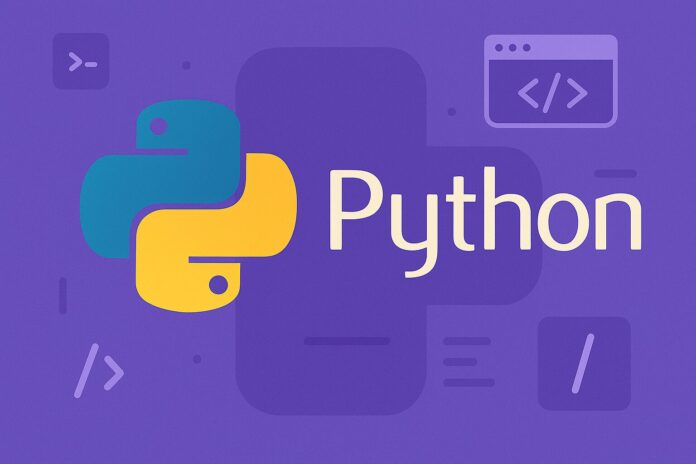Table of Contents
- Introduction
- What is Introspection in Python?
- Understanding Reflection in Python
- The
inspectModule: An Overview - Practical Examples of Introspection and Reflection
- Best Practices for Using Introspection and Reflection
- Limitations and Pitfalls
- Conclusion
Introduction
Python, being a highly dynamic and flexible language, offers powerful tools for introspection and reflection. These capabilities allow developers to examine the type or properties of objects at runtime and even modify behavior dynamically. Whether you are building debugging tools, frameworks, or meta-programming libraries, introspection and reflection are essential parts of mastering Python.
This article will explore introspection, reflection, and how the inspect module can help you perform these tasks efficiently and safely.
What is Introspection in Python?
Introspection is the ability of a program to examine the type or properties of an object at runtime. In simpler terms, Python allows you to look “inside” objects while the program is running.
Common tasks using introspection include:
- Finding the type of an object
- Listing available attributes and methods
- Checking object inheritance
- Determining the state or structure of a program
Examples of introspection:
x = [1, 2, 3]
print(type(x)) # Output: <class 'list'>
print(dir(x)) # Lists all attributes and methods of the list
print(isinstance(x, list)) # Output: True
Python’s built-in functions like type(), id(), dir(), hasattr(), getattr(), setattr(), and isinstance() make introspection straightforward.
Understanding Reflection in Python
While introspection allows you to observe objects, reflection goes a step further: it allows you to modify the program at runtime based on this information.
Reflection includes:
- Accessing attributes dynamically
- Modifying attributes dynamically
- Instantiating classes dynamically
- Calling methods dynamically
Examples of reflection:
class Example:
def greet(self):
return "Hello!"
obj = Example()
# Access and call a method dynamically
method = getattr(obj, 'greet')
print(method()) # Output: Hello!
# Dynamically set a new attribute
setattr(obj, 'new_attr', 42)
print(obj.new_attr) # Output: 42
Reflection makes Python exceptionally flexible and is extensively used in dynamic frameworks, serialization libraries, and testing tools.
The inspect Module: An Overview
Python’s inspect module provides several functions that help you gather information about live objects. It is particularly useful for examining:
- Modules
- Classes
- Functions
- Methods
- Tracebacks
- Frame objects
- Code objects
Some important functions in inspect:
| Function | Description |
|---|---|
inspect.getmembers(object) | Returns all members of an object. |
inspect.getdoc(object) | Returns the docstring. |
inspect.getmodule(object) | Returns the module an object was defined in. |
inspect.isfunction(object) | Checks if the object is a function. |
inspect.isclass(object) | Checks if the object is a class. |
inspect.signature(object) | Returns a callable’s signature (arguments and return annotations). |
Examples of Using inspect
Get all attributes and methods of an object:
import inspect
class MyClass:
def method(self):
pass
print(inspect.getmembers(MyClass))
Get the signature of a function:
def add(a, b):
return a + b
sig = inspect.signature(add)
print(sig) # Output: (a, b)
Check if an object is a function:
print(inspect.isfunction(add)) # Output: True
Retrieve the docstring of a function:
def subtract(a, b):
"""Subtracts two numbers."""
return a - b
print(inspect.getdoc(subtract)) # Output: Subtracts two numbers.
Retrieve the module of an object:
print(inspect.getmodule(subtract))
# Output: <module '__main__' from 'your_script.py'>
The inspect module greatly enhances the power of introspection and reflection by offering deep and granular information about almost any object.
Practical Examples of Introspection and Reflection
1. Building an Automatic Serializer
You can automatically serialize any object to JSON by using its attributes:
import json
class Person:
def __init__(self, name, age):
self.name = name
self.age = age
def serialize(obj):
attributes = {k: v for k, v in obj.__dict__.items()}
return json.dumps(attributes)
p = Person("Alice", 30)
print(serialize(p)) # Output: {"name": "Alice", "age": 30}
2. Automatic Unit Test Discovery
Frameworks like unittest use introspection to find test cases:
import unittest
class TestMath(unittest.TestCase):
def test_add(self):
self.assertEqual(1 + 1, 2)
print(inspect.getmembers(TestMath, predicate=inspect.isfunction))
3. Dynamic Function Calling
def greet(name):
return f"Hello {name}!"
func_name = 'greet'
args = ('World',)
# Dynamically fetch and call the function
func = globals()[func_name]
print(func(*args)) # Output: Hello World!
Best Practices for Using Introspection and Reflection
- Use sparingly: Excessive use can make your code complex and hard to maintain.
- Fail gracefully: Always use error handling when accessing attributes dynamically.
- Security: Never reflect on or introspect untrusted objects.
- Performance: Introspection and reflection are slower than direct attribute access.
- Readability: Reflective code can be harder to understand for someone else (or your future self).
Example of safe reflection:
if hasattr(obj, 'attribute'):
value = getattr(obj, 'attribute')
else:
value = None
Limitations and Pitfalls
- Performance Overhead: Dynamic lookup and evaluation take more CPU cycles.
- Hard to Debug: Errors from dynamic code are often harder to trace.
- Security Risks: Improper use of dynamic execution can lead to severe vulnerabilities.
- Loss of Static Analysis: Many IDEs and linters struggle with dynamically modified code.
Thus, while introspection and reflection are powerful, they should be used judiciously.
Conclusion
Python’s introspection and reflection capabilities provide a unique blend of flexibility and power. With the ability to inspect, modify, and dynamically interact with objects during runtime, developers can build highly dynamic applications, powerful frameworks, and sophisticated debugging tools.
The inspect module further enhances these capabilities by providing fine-grained introspection utilities. However, with this power comes the responsibility to use it wisely. Balancing dynamic behavior with maintainability, performance, and security will help you leverage introspection and reflection effectively in professional-grade Python applications.


